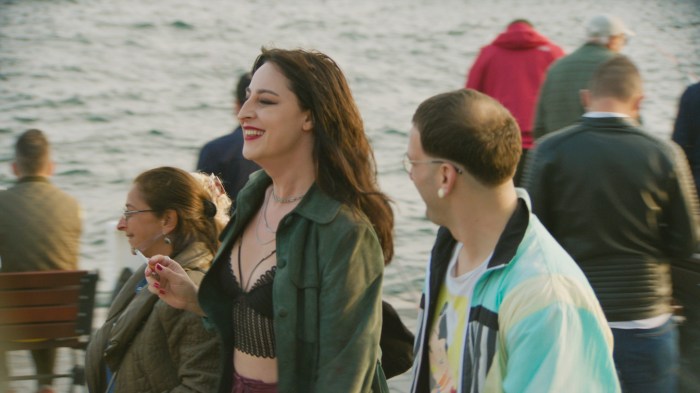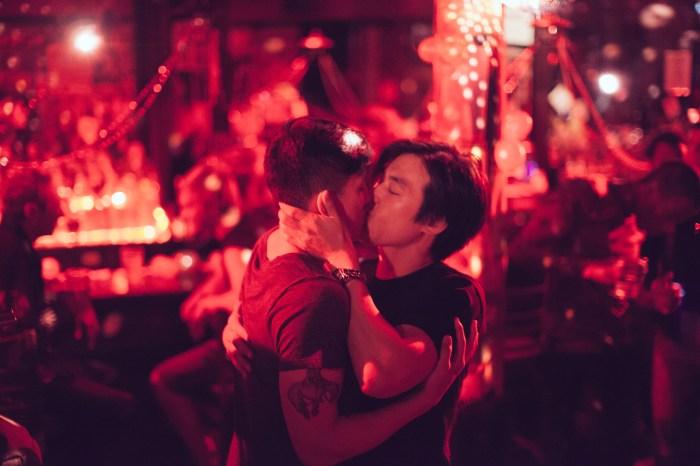BY IOANNIS MOOKAS | Chicago has often been the place where American justice goes to die. From the Haymarket affair of the 1880s, to the smashing of the Wobblies in 1918, and Red Squad rampages of the '30s, to the projectiles hurled at Dr. King, routing him as even the South could not, Chicago has time and again proven its mettle.
So it was in the waning years of the 1960s, when the Federal Building in Chicago's Loop became one of the venues where the newly elected Nixon, pandering to a white-backlash “silent majority” on his law-and-order platform, sought to curb what the administration viewed as the most insurgent elements of the New Left, black nationalism, and the freak-flag-flying counterculture, suborning the federal courts as an organ of politically motivated persecution.
CHICAGO 10
Directed by Brett Morgen
Roadside Attractions
Opens Feb. 29
Landmark Sunshine Cinema
Utilizing a new anti-riot statute devised by Southern lawmakers and appended to civil rights legislation guaranteeing open housing, a federal grand jury in 1969 indicted a disparate group of eight activists on charges of crossing state lines to incite rioting during the 1968 Democratic National Convention – “rioting” more aptly describing, as a federal commission concluded, the Chicago police department's way of dealing with the thousands of antiwar protesters who thronged the city that August.
Radical nostalgia gets a video-game facelift.
“'They're talking about brutality. They haven't seen anything yet,'” volunteered one cop to William S. Burroughs, reporting for Esquire, who with scores of others fled the “tear-gas canisters raining all around” in Lincoln Park, where the tribes of what one leaflet evoked as “psychedelic long-haired mutant-jissomed peace leftists” had gathered to bask in solidarity, dig some righteous speechifying, flirt, schmooze, toke passed-around spliffs, make out, maybe chant some Oms with Allen Ginsberg. Against this threat to civic order, if not to national security, the cops at Mayor Richard Daley's express command gave no quarter, backed by 7,500 Army soldiers and 6,000 national guardsmen.
Since then, the gas attacks and batons and barbed-wire shields and gratuitous force and bloodied, broken young bodies have all become familiar, even inspiring elements of the endlessly mythicized aura surrounding the '68 Chicago convention, of which Haskell Wexler's docu-fiction “Medium Cool” remains the consummate cinematic expression. Somewhat less often recalled nowadays is the so-called “Conspiracy Trial” that followed the convention, a blatant example of the legal repression aimed at liberatory social movements by the state.
To the large body of accounts of the convention, the trial, and the whole megillah is now added “Chicago 10,” a documentary by Brett Morgen, who earlier directed, with Nanette Burstein, the boxing doc “On the Ropes” and a biopic of Hollywood producer Robert Evans, “The Kid Stays In the Picture.” Those inclined to a strict auteurist reading will doubtless find recapitulated in “Chicago 10” obsessive concerns with both savage, codified aggression and the staging of mass spectacle.
Morgen rebrands the trial, already known as the Chicago 8 or sometimes the Chicago 7, depending on how you place Bobby Seale, as the “Chicago 10” in order, the press notes explain, to restore parity to the crucial role of defense attorneys Leonard Weinglass and the late William Kunstler.
Formally Morgen takes greater license, employing a type of animation overlay on live-motion capture, strongly recalling the digital “rotoscopy” of Richard Linklater's “A Scanner Darkly,” as the solution for transporting viewers inside Judge Julius Hoffman's courtroom, where cameras, like much else, were prohibited.
Dotted with intertitles ticking off the dates of convention week, like doors to chambers of rising mayhem, Morgen swings between dramatically sculpted courtroom scenes in a narrative present of September 1969-February 1970, the span of the trial, and glimpses of the convention protests the preceding August. At moments he simulates continuity montage by pooling coverage from a bounty of archival sources, cutting between angles of, say, marchers stopped by a wall of police, the shots changing in visual texture while threading a continuous line of action.
The animated stretches are a mixed lot, mostly resembling Court TV drama (gliding dollies across the jury box, sinister low angles framing Judge Hoffman, tons of close-up reaction shots) under a flattened, twitchy 2-D veneer, goosed with touches like an airborne camera swooping down into the court well from an impossible vantage high above.
The dialogue, edited from transcripts, is voiced by a cast of pros including Liev Schreiber as Kunstler and Jeffrey Wright as Bobby Seale, while Leonard Weinglass gamely voices his own part.
While the most glamorous defendant, Abbie Hoffman, appears charismatic and fetching in Morgen's archival footage, his cartoon self, with voluptuously curled hair drawn as a nettling brier, looks like one of the titular creatures in “Day of the Triffids.” By contrast, Kunstler, with whom Morgen is palpably smitten, is idealized in animated form to resemble Gary Cooper in “High Noon,” his bright-blue suit modeled on a strapping torso as if Superman in his leotards, with gently silvering sideburns, were arguing the case.
Hoffman was one of five defendants centrally involved in planning the convention protests, together with the Christian socialist pacifist David Dellinger, co-convener of the National Mobilization Committee to End the War in Vietnam; the Students for a Democratic Society pillars Tom Hayden and Rennie Davis; and Jerry Rubin, Hoffman's co-prankster in the Youth International Party, or Yippies. Two other defendants, John Froines and Lee Weiner, were outliers and have comparably scaled roles in the film.
The eighth original defendant, Black Panther Party co-founder Bobby Seale, was at once tangential and instrumental to the government's case. Wholly uninvolved in the convention protest planning, Seale was the black lamb Nixon's Justice Department meant to spear with the anti-riot act, even as Panther leadership nationwide was being decimated by every means at the state's disposal. In the film as in life, Seale appears withdrawn and volatile, a figure of disturbance for his sectarian remove – exposing the defendants' ideological rifts and scrapping any semblance of unity – and his self-wounding rages at Judge Hoffman, who ordered him gagged, bound, and finally severed from the case.
Egregious sentences were foregone, heads were shorn, some time was proudly served, all convictions were later overturned on appeal owing to the outlandishly spiteful Judge Hoffman's abuses, and what does it prove? Morgen's stated goal of firing up young viewers elides the fact that, at the time of the trial, the five key defendants already represented an older generation, with many younger anti-war activists entrained by the militant posturing of Weathermen, or perhaps rededicating themselves to cultural activism, environmentalism, feminism, or gay liberation. Politically engaged young people today, it seems, might sooner be wont to pass a spare hour stumping for Obama than waxing nostalgic over a thrilling display of legal vaudeville that, on balance, wasn't terribly decisive.


































